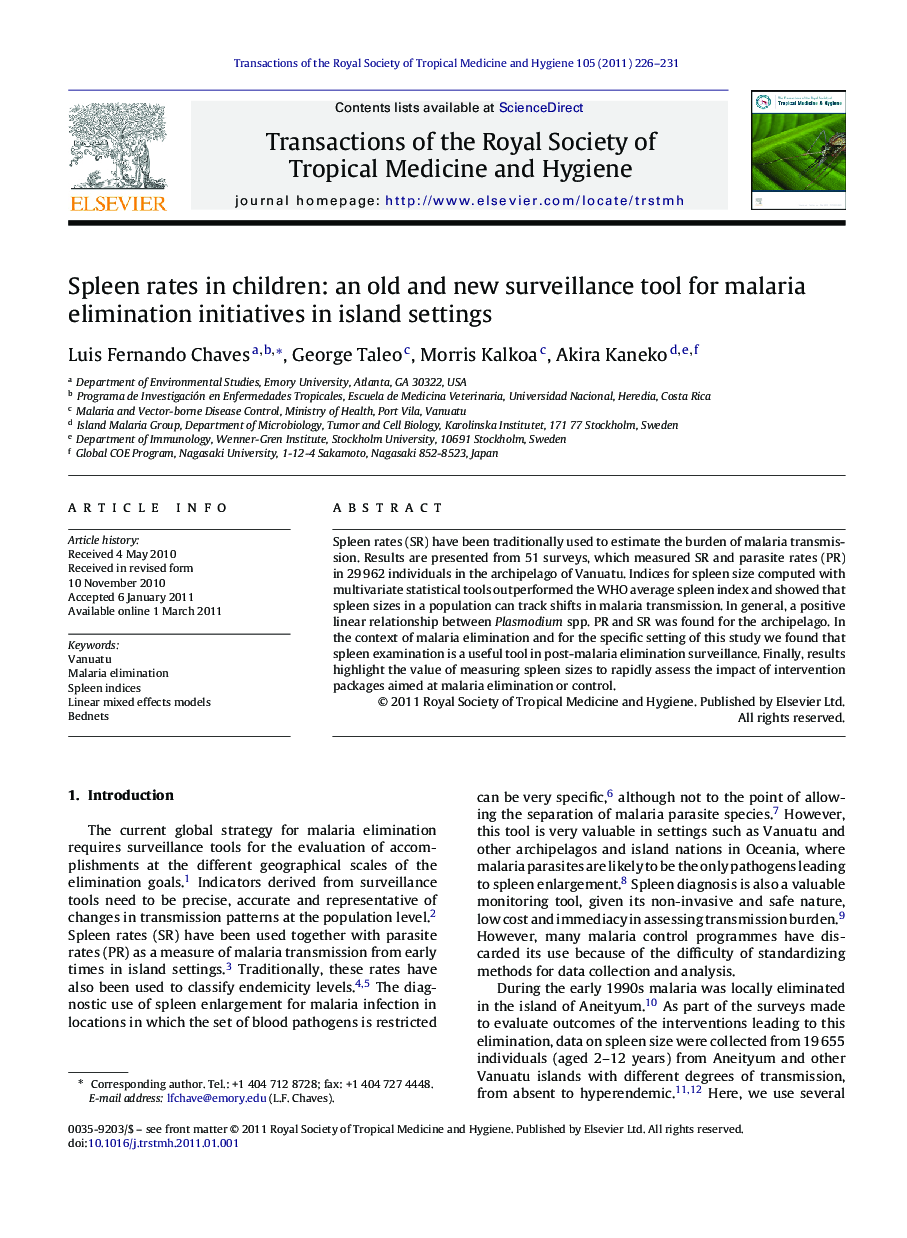| Article ID | Journal | Published Year | Pages | File Type |
|---|---|---|---|---|
| 3420594 | Transactions of the Royal Society of Tropical Medicine and Hygiene | 2011 | 6 Pages |
Abstract
Spleen rates (SR) have been traditionally used to estimate the burden of malaria transmission. Results are presented from 51 surveys, which measured SR and parasite rates (PR) in 29Â 962 individuals in the archipelago of Vanuatu. Indices for spleen size computed with multivariate statistical tools outperformed the WHO average spleen index and showed that spleen sizes in a population can track shifts in malaria transmission. In general, a positive linear relationship between Plasmodium spp. PR and SR was found for the archipelago. In the context of malaria elimination and for the specific setting of this study we found that spleen examination is a useful tool in post-malaria elimination surveillance. Finally, results highlight the value of measuring spleen sizes to rapidly assess the impact of intervention packages aimed at malaria elimination or control.
Related Topics
Life Sciences
Immunology and Microbiology
Applied Microbiology and Biotechnology
Authors
Luis Fernando Chaves, George Taleo, Morris Kalkoa, Akira Kaneko,
